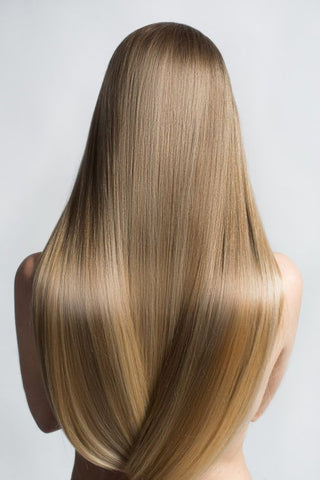A hair mask is more than just an occasional treatment; it's an essential step in achieving healthier hair and maintaining your hair care routine. These deep-conditioning treatments provide intensive nourishment and hydration, helping to improve hair texture, repair damaged hair, and reduce frizz. Whether you have dry hair, color treated hair, or you simply want to maintain the shine and softness of your strands, using a mask can have a positive impact on your hair’s overall health.
How Hair Type Influences Frequency
The frequency of using a hair mask varies depending on your hair type. Those with dry hair, curly hair, or frizzy hair may benefit from using a mask two to three times a week to help lock in moisture and prevent breakage. On the other hand, if you have fine or oily hair, using a mask once a week might be sufficient to avoid creating a greasy residue. Adjusting the frequency based on your hair feel ensures that the natural oils in your scalp are balanced, promoting healthy hair follicles and reducing issues like hair loss.
Factors to Consider for Optimal Mask Use
A number of factors affect how often you should apply a hair mask:
-
Whether your hair is exposed to heat styling, such as a flat iron, or harsh weather
-
The use of hair extensions or chemical treatments, like coloring
-
Your scalp type, whether it's oily or prone to dandruff
-
The specific moisturizing properties of the mask (e.g., vitamin E, fatty acids, or seed oil)
-
Your hair’s current needs, such as dealing with split ends or needing to reduce frizz
By considering these factors, you can tailor your use of hair masks to best suit your individual hair texture and goals.
Hydration vs. Protein-Based Masks
Different types of masks cater to different needs. Hydrating masks are ideal for boosting moisture and can be used more frequently, especially for dry hair or color treated hair. Ingredients like sweet orange, cetearyl alcohol, and behentrimonium chloride provide a delightful scent and deep conditioning while leaving your hair feeling soft. On the other hand, protein-based masks are designed to strengthen the hair’s structure, preventing breakage and helping hair grow. Protein masks should be used sparingly, about once every two weeks, as overuse can lead to brittle strands and thinning hair.
Signs of Overuse and Adjustment
If you notice your hair feeling weighed down, excessively shiny, or heavy with greasy residue, it may be a sign that you're overusing a hair mask. This can especially happen if you don't remove excess water from your hair before applying the mask, as damp hair absorbs the treatment more effectively. Similarly, if you’re using a hydrating mask but still noticing dryness or frizz, you may need to increase the frequency of your treatments. Sometimes, simply wrapping your hair in a hot towel after applying the mask can enhance its absorption and lead to beautiful shine and smooth strands.
Maximizing the Benefits of Hair Masks
To get the most out of your hair mask, make sure to follow these key steps:
-
Start by washing your hair with a clarifying shampoo to remove any buildup.
-
Towel dry and remove excess water to ensure the mask penetrates deeply.
-
Apply the mask from mid-lengths to ends, focusing on areas prone to frizz or split ends.
-
Wrap your hair in a towel or use a hot towel for added heat, which helps the mask better infuse into the hair follicles.
-
Rinse thoroughly, ensuring no product is left behind to avoid greasy residue.
Following these steps will allow your hair to fully absorb the nutrients from the mask, whether you're targeting moisture, repair, or shine.
Tailoring to Your Hair's Needs
Your hair’s needs can change due to seasonal factors, lifestyle, or the use of styling tools like a flat iron. If you notice changes in your hair texture or find that your hair lacks elasticity, it’s time to adjust your hair care routine. Sometimes, using a mask enriched with vitamin E or oils like seed oil can restore balance, while other times, switching to a lighter mask might help prevent hair feel from becoming too soft or limp. Your stylist can also provide valuable insights on how to tweak your mask usage for your best hair possible.
Final Thoughts on Hair Mask Use
Using a hair mask is an excellent way to improve the health and appearance of your hair. Whether you're dealing with frizzy hair, split ends, or simply aiming for that silky, shiny finish, regular use of a mask can make a noticeable difference. By paying attention to your hair type, specific needs, and the condition of your scalp, you can fine-tune your use of masks to ensure your hair always looks its best. Don’t forget to follow up with a gentle conditioner and give your scalp a break between treatments to allow your hair follicles to breathe and natural oils to regulate.
